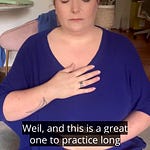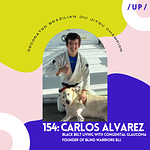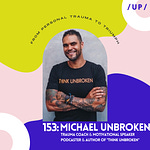Anisha Gangotra is an inclusive dance instructor living in the UK, and the sister of former guest Trishna Bharadia. In 2008, at the age of 24, she was diagnosed with ulcerative colitis (UC) – an autoimmune condition that attacks the gut. Shortly after, in 2011, she was a victim in a high-speed car accident; during her long recovery and rehabilitation, she was additionally diagnosed with PTSD, depression, and anxiety. For the next 4-5 years, she sought to access mental health treatments such as CBT (cognitive behavioral therapy), EMDR (eye movement desensitization and reprocessing, covered in Episode 11 with Michele Sherman MFT), and others – but in some cases, it took years for her to receive proper access to these treatments. In a total career shift inspired by her own experience, she also began working full-time to support people with mental health issues in the workplace – be they seeking work, navigating discrimination, or considering leaves of absence. In 2015, she began to teach inclusive dance classes – designed for people with disabilities/long term conditions, as well as for those without – partly for her own mental and physical health, but also to provide a safe space for others with similar conditions to rediscover freedom and joy in their bodies – in a safe space.
Tune in as Anisha shares…
- that colitis (including UC) is under the same umbrella as Crohn’s – the inflammatory bowel diseases (IBD)
- that she first detected the potential for UC when she passed blood in her stool
- that her diagnosis was not straightforward
- that UC consists of flares and periods of remission, much like many other autoimmune diseases
- about the period of onset, during which she questioned her own sanity
- the relief of receiving a diagnosis
- that her first colonoscopy was administered without sedation – or explanation
- that she now has a medical team she truly trusts – even though she has to travel quite far to reach them
- the importance of connecting to a chronic illness community
- her road to recovery post-car-accident: not just physically, but mentally
- how she discovered she was living with PTSD – she began to jump at loud noises, or feel triggered at the smell of smoke, crushing metal (cans), etc
- her journey through therapies to treat her PTSD – she started with CBT (two rounds), but found EMDR to be most effective
- that CBT gave her behavioral techniques to cope with triggers, but EMDR helped to remove the triggers entirely
- a description of how EMDR works to engage both sides of the brain, allowing it to get “unstuck”
- that she lived with her PTSD symptoms for 4 years before she found EMDR – and she believed, the entire time, that she wouldn’t have to continue to live her life in fear
- that she was also diagnosed with anxiety and depression associated with her PTSD – all of which emerged after her car accident
- that she decided something good must be able to come out of her adverse experiences – and so she changed careers and began to work in the mental health field, assisting those afflicted with employment concerns
- that she sees her experience as a major strength in her job
- that she discovered Zumba as part of her recovery, and fell in love with it – specifically because it wasn’t about getting it “right”, but about enjoying it
- how teaching inclusive dance inspires her
- the role her family has played in her ongoing care
- that healing is not linear, and she still has dips in her mood from time to time – and that this is OK
- that the responsibility of teaching her class and showing up for her students has helped her work through her moods and been key in her healing
- a study of her resilience – and an acknowledgement of her strength
- how she practices self care and manages her symptoms – and lives a full life
- the importance of doing one’s own research as a patient, and seeking targeted treatment by becoming engaged in one’s care
- the importance of travel to expand her perspective – despite its challenges to her health














Share this post